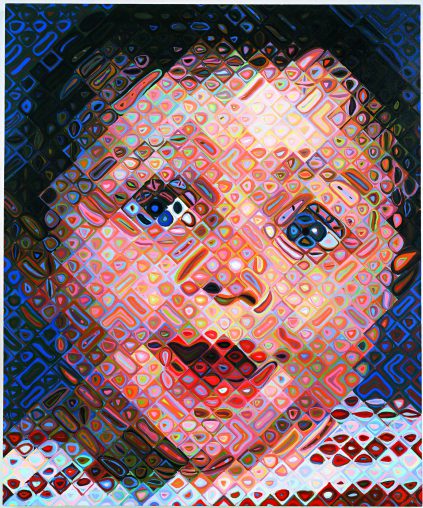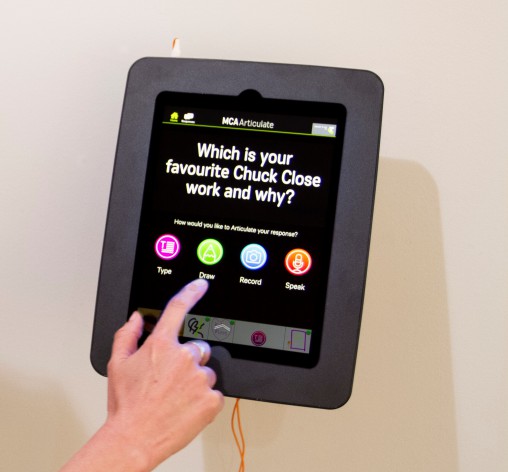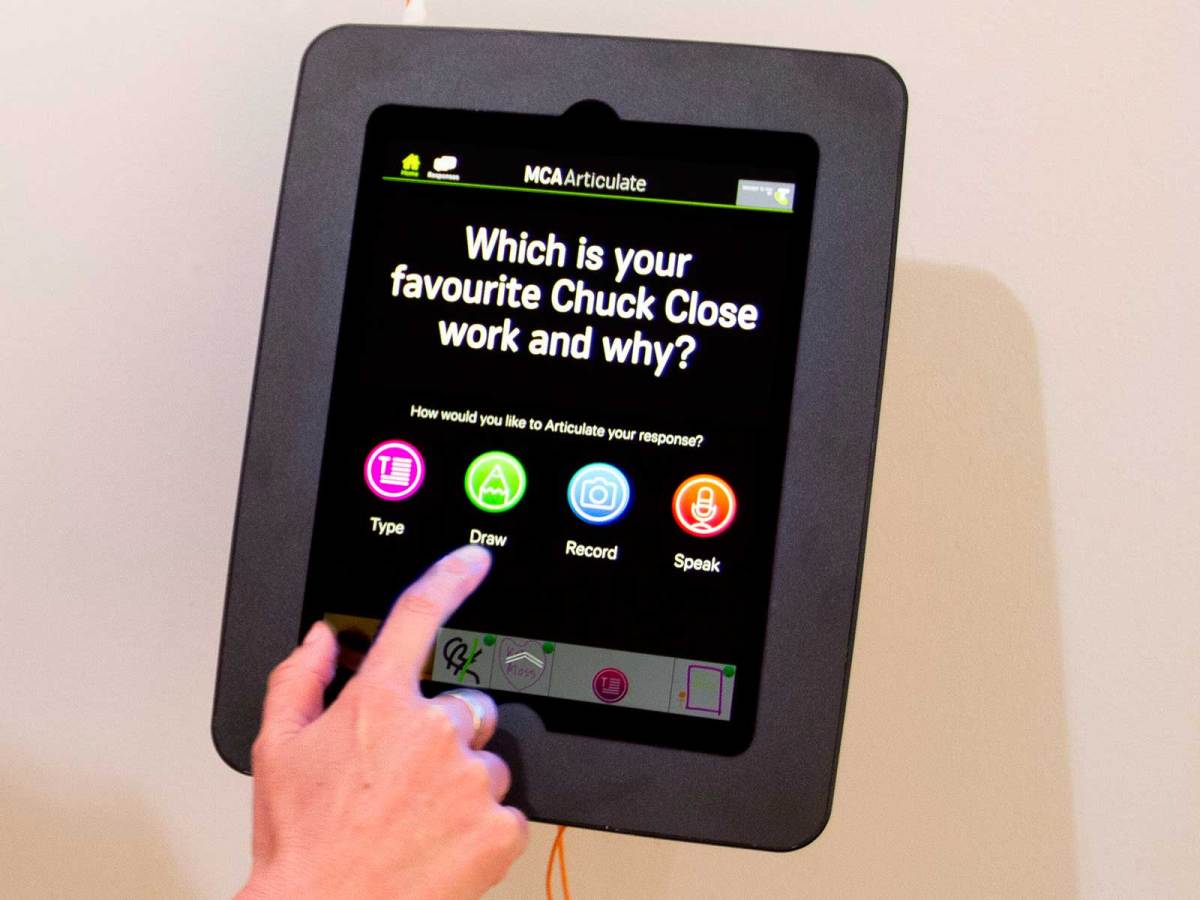The Museum of Contemporary Art and Telstra have teamed up to provide a new digital experience to gallery goers. It is part of a broader trend of engaging individuals on a personal level using technology which is also emerging in the retail industry.
MCA Articulate is an in-gallery iPad application that presents questions to visitors such as “Why do we need art?” and allows users to respond using text, images and sound. The iPads will be positioned around the Chuck Close: Prints, Process and Collaboration exhibition which opened yesterday and will allow the gallery to collate a wide range of responses from its visitors.

“Digital engagement is fundamental to achieving the MCA’s vision of increasing access to contemporary art,” said MCA director Elizabeth Anne Macgregor.
The purpose of Articulate is not so much to bring more people into the gallery but to give them a different experience once they arrive.
“This will create a new form of connection between the MCA and its visitors and it will also surface a range of different voices responding to and engaging with contemporary art,” said Gabby Shaw, MCA manager, digital media.
It’s a first for the gallery and is part of a broader trend of two-way communication between individuals and institutions, where consumers become more active participants or even collaborators.

A similar philosophy is also impacting the retail industry, where technology is being used to form personal connections. Here are three examples of the trend using robots, 3D printing and augmented reality:
1. Hointer is a retail concept which marries the processes of online retail and the emotional connection of bricks and mortar, or as CEO Nadia Shouraboura puts it “the art and science” of retail.
Using a QR code and the Hointer app, consumers hold their phones up to a piece of clothing in the store and their size is delivered to the change room thanks to a robotic backroom. To enrich the shopping experience, once an item is scanned it also shows the most popular social media post connected to the item, for example sales of a pair of black pants boomed once shoppers were shown a picture of Prince Harry wearing the same pair. The system also provides product recommendations and sales staff can be called to assist if need be.
Here at Hointer, we do retail a little differently. Come on by and experience an entirely new way to shop! pic.twitter.com/tGRUDwo13B
— Hointer (@hointer) August 28, 2013
Cultivating this emotional connection will keep competition fierce between all kinds of retailers, bricks and mortar and online.
“Online will always be a wonderful way to shop… but when it comes to playing with toys, when it comes to touching your cellphone, when you really want to connect with it, buying online is just not good enough,” Shouraboura said.
2. Normal makes 3D printed earphones that are customised by the user and ordered via a free mobile app or at Normal’s flagship store the Factory located in Chelsea, New York City. Via the app shoppers send in a photo of each of their ears and a special pair of ‘Normals’ are engineered, 3D printed and then delivered.
Normal’s Factory is part retail space, factory, office and lab. The company says, “With 3D printers lining the perimeter of the space and a fully exposed assembly process, Normal encourages auditory, tactile, and visual exploration of how Normals are sculpted and built. Normal’s on site Fitters help customers through the simple photo capture and customisation process. Just like Normals, each in-store experience is unique and personalised.”
Getting 3D-printed earbuds at @normalears. https://t.co/TUHpb9HG2l
— The FADER (@thefader) November 11, 2014
3. Augmented reality is a powerful tool for retail because it allows you to digitally visualise what something may look like in a physical space. For example the 2014 Ikea catalogue and app allows customers to see how products will appear in their homes. In the B2B market, Augment is an app that allows sales reps to show retailers what their products or merchandising will look like in store before it arrives.
Chuck Close: Prints, Process and Collaboration is on at the MCA in The Rocks from 20 November to 15 March 2015.

